![]()
![]()
![]()
Use LEFT and RIGHT arrow keys to navigate between flashcards;
Use UP and DOWN arrow keys to flip the card;
H to show hint;
A reads text to speech;
19 Cards in this Set
- Front
- Back
|
The Scope |
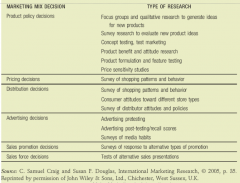
|
|
|
The Challenges |
•The global marketplace is complex –Differences from country to countries exist at many levels –Companies frequently lack familiarity with foreign markets •Comparing studies across countries can be difficult •International research is a relatively costly endeavor |
|
|
Market Research Process |
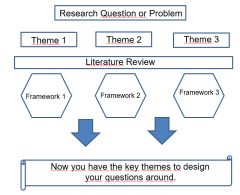
|
|
|
The Tasks of Research Design |
1)Define the information needed 2)Decide whether the design is exploratory or conclusive 3)Design the sequence of method to understand and/or measure the phenomena 4)Construct and pretest an appropriate means to capture data 5)Specify qualitative and/orquantitative sampling process andsample size 6)Develop a plan of qualitative and/orquantitative data analysis |
|
|
Research Design Classifications |

ExploratoryResearch: adesign characterized by aflexible and evolving approach to understand marketing phenomenon that are difficult to measure Conclusive Research: adesign characterized by the measurement of clearly defined marketing phenomenon. Descriptive Research: atype of conclusive rsch whose objective is to describe something, usually market characteristics or functions Crosssectionaldesign: a type of research design that depends on asample of a population only once. Single CS: a sample is drawn from the target population and information is taken from thissample only once. Multiple CS: ther are two or more samples and information is obtained only once. Longitudinal:Fixed sample of population measured repeatedly over time Causal research: atype of conclusive research where the major objective is to isolate cause and effect interactions.Understanding which variables are the cause (independentvariables) and which are the effect (dependentvariables), to determine the nature of a relationship and finally to test a hypothesis. |
|
|
Wheredo researchdesign errorscomefrom? |
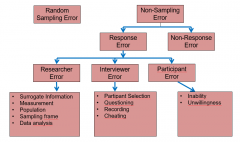
|
|
|
The Most ImportantStep The Research Question |
•Etic approach –Assumes that a research questionin one culture can be used in another culture. This approach allows forcomparison across countries, but could miss culture differences. •Emic approach –Assumes cultures are so differentthat each requires a separate research study to capture the local contextrelative to each countries frame of reference. |
|
|
The SourcesofInformation |
•PrimaryData –Datacollected specifically for a research assignment •Secondarydata –Refersto previously collected and available data •Bothpresent challenges to global marketing research –What are they? The willingness to respond get local to help. The language different. |
|
|
DataCollection |
QUALITATIVE Interviews FocusGroup OtherFieldwork QUANTITATIVE Questionnaires Surveys OnlineDatabases |
|
|
International Marketing Research |
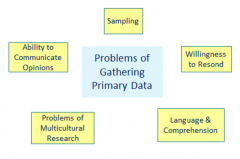
|
|
|
International Marketing Research2 |
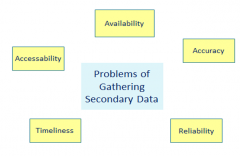
|
|
|
ResearchInstruments |
•Focusgroups help capture appropriate variables to investigate •Creatinga cross-cultural questionnaire requires –Back translation…or –Parallel translation •Takecare with idiomatic expressions –“Computers” in Taiwanese may become“calculators” to Singaporeans •Be careful about usingEnglish in countries with high knowledge ofEnglish |
|
|
Surveys |

Surveys–Importance of probability samples •Every element within thepopulation has an equal chance of being selected |
|
|
Types ofSamples |
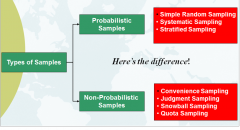
Probabilistic Samples – If donecorrectly, can generalize sample findings to population with measured degree ofconfidenceSimple Random Sampling - Each populationmember has equal chance of being selected Systematic Sampling – Every nth elementis selected. N is usually chosen from arandom number table. Stratified Sampling – Sample framedivided into strata. Each element withinthe strata has a chance of being selected. Non-Probabilistic Samples – Cannotgeneralize sample to population with any measured degree of confidence Convenience Sampling – Choosing a samplebased on convenience to interviewer, e.g., friends/acquaintances, stand outsidestudent union and ask whomever come along, etc. Judgment Sampling - "Expert"uses judgment to identify representative samples Snowball Sampling – Typically begins witha judgment or convenience sample. Thoserespondents are asked to identify other sample elements, usually people who aresimilar to them in some way. Often usedto target hard-to-reach populations. Incollectivist countries and/or in countries where research is non-normative ortrusted, snowball samples are commonly used since the recommendation of afriend may persuade participation. Quota Sampling – Selecting a non-randomsample with quota limits/parameters on particular characteristics (x number ofmales or females, x number of people between 18-34 and x number of people 35years and older, etc.). Typically usedin intercept (mall, shopping center, in-restaurant, and on-the-street types ofsurveys). Snowball samples may be necessary indeveloping countries Supervising data collectors – especiallyin developing countries – is importantWhere and how to collect data varies bycountryJapanese prefer face-to-face interviewsand are reluctant to answer phone surveys |
|
|
FocusGroups |
Selectionand “Sample Size” –How focus groups SHOULDbe used: •Learning how your product is used •Understanding customers’ experience with product •Acquiring descriptive consumer brand perceptions •Exploratory testing of new product, positioning, and promotionstrategies –How focus groups SHOULD NOT be used: •Estimate size or dollar value of market •Definitively identify segments •Make go/no-go decisions on new products, brand positioning, orpromotion strategies |
|
|
CrossCultural ChallengesofFocus Groups |
•Men and women should not be in the samegroup in certain countries •Courtesy bias precludes some people(Japanese) from criticizing products. •Respondents in certain cultures tend toshow up late (or not at all!) •Young participants hesitant to criticizeor disagree with older participants in collectivist cultures •Focus group length should be longer inhigh context societies to allow enough get-to-know-each-other time. |
|
|
PrivacyConcerns |
•Personal finances can be a touchy subject in many countries –The Dutch are more willing to discuss sex than money •The EU Privacy Directive limitsthe use of telephone/Internet interviews –In particular, questions related to subjects such as health, politicalbeliefs, and sex habits |
|
|
Translating Scales |
•Doesthe meaning of the scale itself “translate” cross-culturally? –A-F“good school grade” or 1-6 in Europe •Doesit make sense outside of U.S. context? Switzerland? Germany? –“Satisfied”versus “Happy” versus “Delighted” •Notall cultures and languages see a clear difference or an increase in intensitybetween these When in doubt, use a numeric orLikert scale |
|
|
MonitoringCompetition |
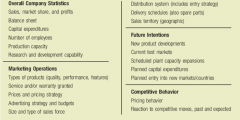
|

